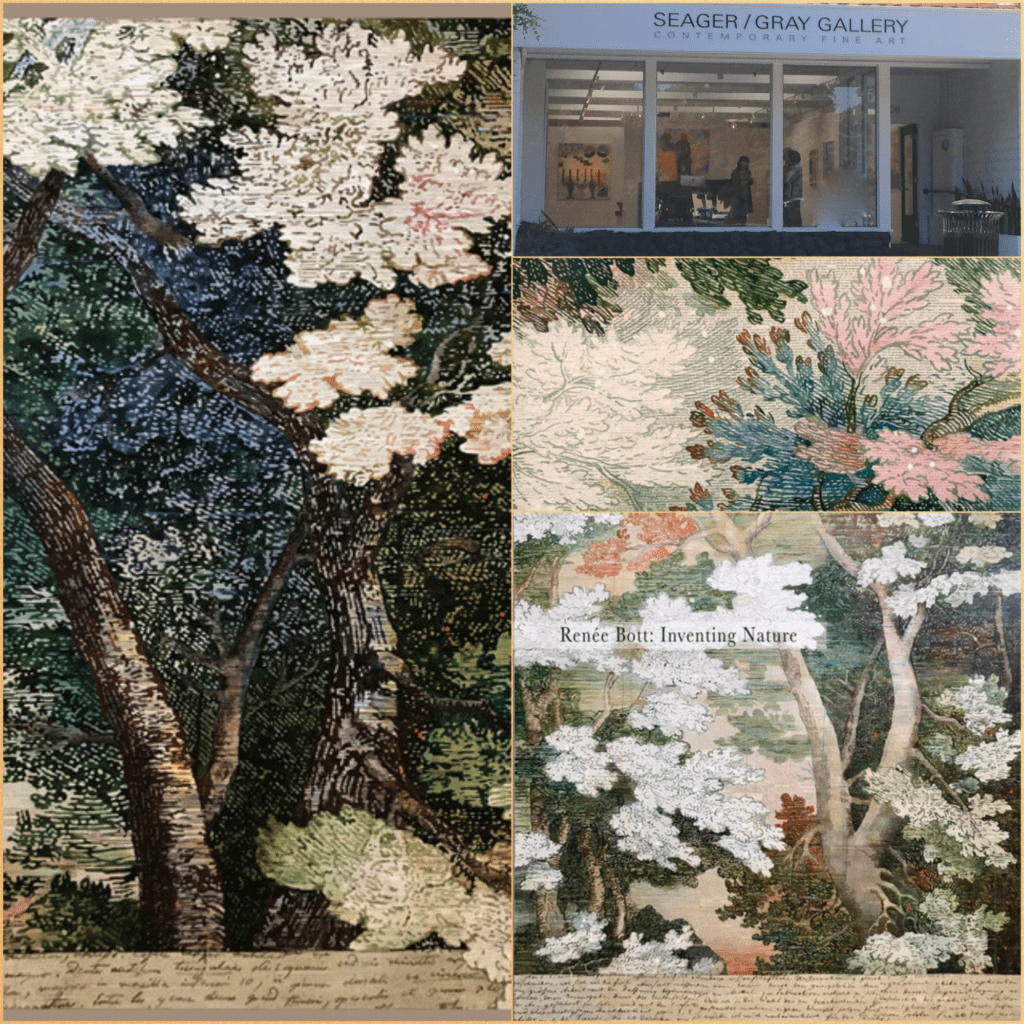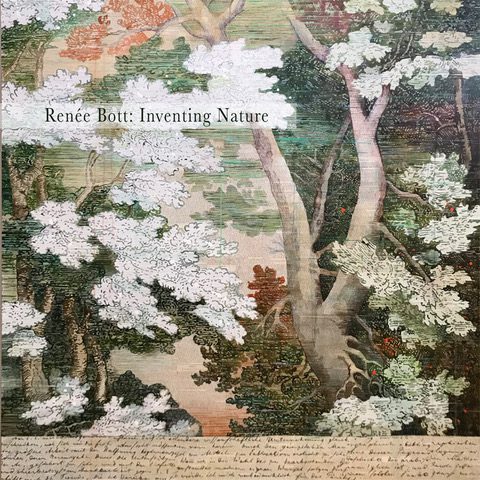
Seager/Gray Gallery, one of the Bay Area’s premier art galleries and among the gallerists who spearheaded the creation of the Mill Valley Art Dealers Association to raise our community’s profile as an arts destination, is unveiling this week Renée Bott: Inventing Nature, a painting exhibition about nature and naturalists. The show runs from August 31 – September 29, with an artist reception on Sunday, September 11 (4-6pm). The gallery is open Tuesday through Saturday from 11-5pm, Sunday 12-4 pm and by appointment.
For Inventing Nature, Bott weaves history, time, nature and environmentalism into works that borrow from multiple sources to create a subtly nuanced tapestry. Bott’s exhibit focuses on three naturalists, Alexander von Humboldt, Charles Darwin, and John Muir whose extensive travels enabled them to study nature on a granular level and understand the effects of human intervention on the natural world.
The title of the show borrows from the book The Invention of Nature by Andrea Wulf, an illuminating biography that brings into focus the life of visionary German naturalist, Alexander von Humboldt whose ideas changed the way we see the natural world and, in the process, created modern environmentalism. “Before Humboldt,” Bott says, “the prevailing European perception of nature was that it was something we took from. Humboldt was the first say that we are a part of nature, not separate from it. Invented Nature refers to the fact that a painting is a replication of nature and not nature itself. “
Two complimentary works in the exhibition are entitled Darwin’s Nature and Darwin’s Nature (Red) (60 x 44” each). Working on pages from The Voyage of the Beagle published in 1839 by Darwin, the artist utilized images of trees from 14th century Flemish engraver Aegidius Sadeler. Asked why she looks to these ancient printmakers for imagery, Bott is quick to explain, “The quality of the line is so gorgeous.” The handwriting on the bottom of these works is actually that of von Humboldt,” she continues, “Humboldt was an avid note taker who wrote absolutely everything down that he encountered.” Bott was able to find examples from his notebooks online from an archive in Germany.
Another pair of images, Homage to Humboldt and Passages (72 x 62” and 72 x 60”) each bear the images of ships that transported the naturalists. Humboldt, ever the perfectionist, would hire craftsmen of his day to illustrate his many books and the background image in Homage to Humboldt is taken from a lithographic colorplate from one of them illustrating the principal peaks of two continents. The ship is a brigantine similar to the one that took the scholar from the United States where Humboldt traveled in order to meet Thomas Jefferson. The two became lifelong friends in spite of Humboldt’s outspoken criticism of Jefferson’s ownership of slaves. Humboldt’s handwriting dominates the sky in this work.
The ship in Passages is Darwin’s famous HMS Beagle, the ship he boarded in 1831 at 22 years of age for a 5-year journey that took him around the world. The map in the background is one created by a Milanese mapmaker in 1587. It is one of the largest ones in the David Rumsey map collection at Stanford University. Here again, Bott is weaving distant past with present, in this case she was also keenly aware of the harmonious colors and interesting perspective on the then known world.
Muir’s Muse (72 x 62”) is mounted on pages of Muir’s book, Nature Writings, which includes many of Muir’s recollections of his time spent in the Sierra. The trees in this work actually come from a conglomeration of various 14th and 15th century etchings and engravings.
Asked about the dramatic painting entitled The Bull, the artist smiles. “That’s the one that started it all,” she remarked, referring to this series of works centered around the environment. Bott’s nephew founded a sustainable organic farm and had recently renounced eating beef. “He does eat meat, but not beef – since beef farming is extremely toxic to our environment. I painted The Bull as a tongue in cheek reaction to Spencer’s declaration.” The book pages are from Call of the Reed Warbler, a book by Charles Massy about new ways of growing food that are in harmony with von Humboldt’s early ideas. “I was thinking, “he’s right, we all need a little less Bull in our lives,” she continues, but mostly The Bull came about because I came across a beautiful wood engraving of a bull and I wanted to use it. Given the cautionary nature of the exhibition, it is easy to see that sideways piercing glare of this imposing animal as a dare to humans to clean up their act.
Bott’s intelligently conceived works are an exquisite marriage of thoughtful preparation and sublime execution. They bear her signature attention to detail, form and color while celebrating the glory of nature and our dire need to understand the delicate balance in need of restoration.

